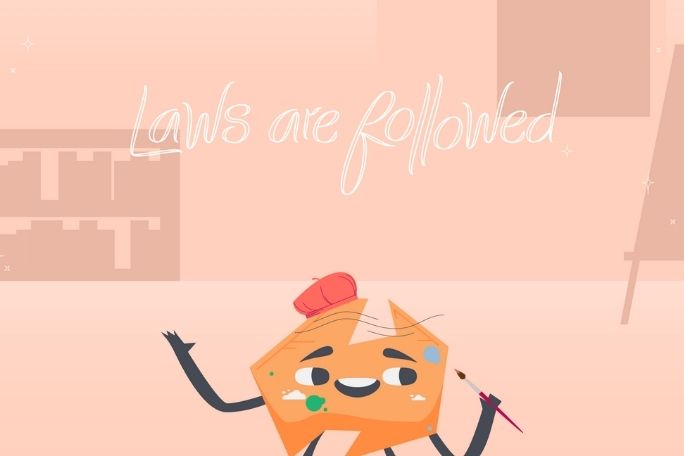Lesson summary
In this Finding Out lesson, students will explore the Australian court system and its relationship to rights and freedoms. Students are introduced to the topic in a debate line, wherein they respond to a set of provocations from a specific viewpoint. The class will view a video featuring an overview of the court system, and engage in a ‘See-Think-Wonder’ visible thinking routine. Students will work in groups to research and present information about an aspect of the Australian court system they are wondering about. Students will use a hexagonal thinking tool to make connections between the Australian court system and rights and freedoms. Finally, students will reflect on their learning using the ‘Connect-Extend-Challenge’ visible thinking routine.
Essential questions:
- What is the Australian court (judicial) system?
- What is the purpose of courts of law?
- What are the details of the court system?
- What is the link between the court system and rights and freedoms?
Lesson guides and printables
Lesson details
Curriculum mapping
Australian Curriculum content descriptions:
Year 9 Civics and Citizenship:
- The key features of Australia’s court system and how courts apply and interpret the law, resolve disputes and make law through judgements (ACHCK077)
- The key principles of Australia’s justice system, including equality before the law, independent judiciary, and right of appeal (ACHCK078)
- Develop, select and evaluate a range of questions to investigate Australia’s political and legal systems (ACHCS082)
- Identify, gather and sort information and ideas from a range of sources and reference as appropriate (ACHCS083)
- Recognise and consider multiple perspectives and ambiguities, and use strategies to negotiate and resolve contentious issues (ACHCS086)
General capabilities: Literacy, Critical and Creative Thinking.
Relevant parts of year 9 achievement standards: Students explain the key principles of Australia’s system of justice and analyse the role of Australia’s court system. When researching, students analyse a range of questions to investigate Australia’s political and legal systems and critically analyse information gathered from different sources for relevance and reliability. Students compare and account for different interpretations and points of view on civics and citizenship issues. They analyse ways they can be active and informed citizens in different contexts.
Unit of work: Story of Our Rights and Freedoms – Year 9.
Time required: 120 mins.
Level of teacher scaffolding: Medium – share background information with students and lead the class through a presentation.
Resources required
- Student Worksheet – one copy per student
- Device capable of audio/visual presentation to present a website to the class
- ‘Exploring the systems that protect our Rights and Freedoms’ Presentation
- Sticky-notes
- Scissors
- Glue
- Butcher’s paper (optional)
- Web-enabled devices for students to share in groups
- UDHR articles (enough for groups of 2-3 to share), hexagonal thinking template
- A4 paper (one sheet per student)
Skills
This lesson is designed to build students’ competencies in the following skills:
- Collaboration
- Communication
- Problem solving
Additional info
Throughout the Story of Our Rights and Freedoms lessons, students will consider Civics and Citizenship concepts through a human rights lens. They will critically assess the Australian system of government and the effect that it has on our rights and freedoms.
There is no universally accepted definition of human rights, and our understanding is continually developing. Some definitions include:
- The recognition and respect of peoples’ dignity
- A set of moral and legal guidelines that promote and protect the recognition of our values, our identity and access to an adequate standard of living
- The basic standards by which we can identify and measure inequality and fairness
- Those rights associated with the Universal Declaration of Human Rights (UDHR)
When we talk about human rights we usually refer to principles that have been agreed upon by countries throughout the world. These rights have been set down in international agreements and form part of international law. They can also be written into the domestic law of individual countries. Human rights cover virtually every area of human life and activity. These include:
- Civil and political rights, such as freedom of speech and freedom from torture
- Economic and social rights, such as the rights to health and education
- Individual rights, including the right to a fair trial
- Collective rights, or those rights that apply to groups of people, such as the right to a healthy environment or to live on one’s ancestral land.
The UDHR is an international document that recognises the basic rights and fundamental freedoms to which all human beings are entitled. It was adopted by the United Nations General Assembly on 10 December 1948 and marks a key milestone in the history of human rights. The Magna Carta, though limited in who it protected, was an important precursor to the UDHR.
Click here to watch a video about the Magna Carta.
You can view the entire text of the Universal Declaration of Human Rights, and the other core international human rights treaties, on the United Nation’s website or by downloading RightsApp (free from the iTunes App store).


Welcome back!
Don't have an account yet?
Log in with:
By signing up to Cool.org you consent and agree to Cool's privacy policy to
store, manage and process your personal information. To read more, please see
our privacy policy here(Opens in new tab).
Create your free Cool.org account.
Many of our resources are free, with an option to upgrade to Cool+ for premium content.
Already have an account?
Sign up with:
By signing up to Cool.org you consent and agree to Cool's privacy policy to
store, manage and process your personal information. To read more, please see
our privacy policy here(Opens in new tab).